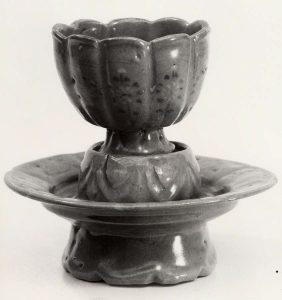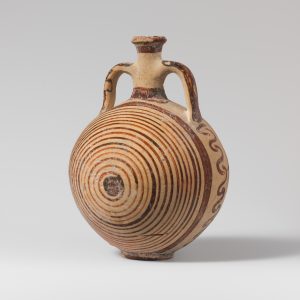
The Miracle of Shravasti
ca. 7th-9th century
Thailand
http://www.metmuseum.org/art/collection/search/64118?sortBy=Relevance&where=Thailand&what=Clay&ft=*&offset=20&rpp=20&pos=24
I chose this intriguing artwork, because the intricate details of all the humans embellished in this artwork is uniquely symmetrical. The humans are posed to honor the centerpiece. I learned “Shravasti” is a deity and is praised for being a miracle. I learned how crucial space is in an artwork.

Cup with Stand
latter half of the 13th century
Korea
http://www.metmuseum.org/art/collection/search/57499?sortBy=Relevance&when=A.D.+1000-1400&where=Korea&what=Clay&ft=*&offset=0&rpp=20&pos=8
I had selected this artwork, because the idea of stacking cups and bowls in such a creative way had caught my attention. It was such an interesting form with the texture and light grey color. It seems to resemble ancient calmness and peace in my mind. I learned that stacking pieces together in such a way can easily express another message. The message being order and symmetrical alignment can exist in both meanings of harmony.

Terracotta lentoid flask
ca. 1400–1050 B.C.
Mycenaean
http://www.metmuseum.org/art/collection/search#!?PerPage=20&offset=0&era=2000-1000%20B.C.&geolocation=Greece&material=Clay
I had selected this artwork, because the embellished lines all focusing on a small circle was expressing the roundness form of the vessel. This hooked my hunt to pick my last artwork in this scavenger hunt. I learned a way to emphasize a focus point with “rings” around the circle, which is placed carefully in the center of the vessel, as if looking at a side view of it and measuring the center vertically and horizontally.